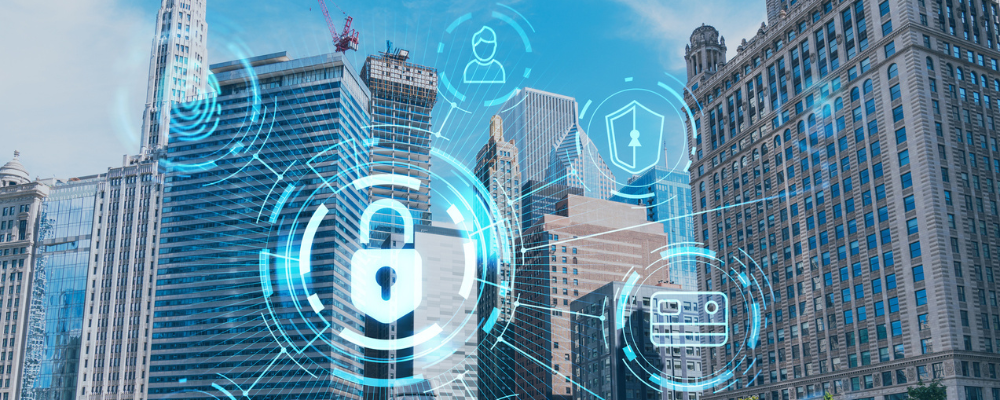Cybercriminals have been shifting their attention toward local governments in recent years, looking for weaknesses they can exploit. Attacks have taken down city offices, delayed utility billing, and knocked school networks offline. While municipalities come in all sizes, many are navigating the same challenge: how to protect essential systems with limited people and limited budgets.
At the same time, data shows that the cybersecurity risks are rising. Ransomware attacks against government organizations have more than doubled over the past two years, and new threats continue to emerge. When a breach does happen, the damage often goes beyond technology. Getting systems back online is one part of the work; restoring public confidence can be harder, and it often takes longer. By focusing on practical steps, municipalities can build stronger defenses and better protect the communities they serve.
Current Threats Facing Municipalities
One of the most persistent threats facing local governments today is ransomware. These attacks can lock up critical data and systems, sometimes bringing operations to a standstill for days or longer. When utilities, public safety services, or school networks go offline, even short interruptions can cause big problems for residents. Some municipal offices have been forced to shut down billing systems, delay permits, and push back basic public services while they work to get back online.
Recovering from an attack often comes with a steep price. In 2024, the average cost for state and local governments to recover from a ransomware incident hit $2.83 million, more than double what it was just a year earlier. On top of that, many municipalities lost nearly three weeks of operations on average. In Seattle, the public library system spent about $1 million and 100 days restoring services after a $6 million extortion attempt. Suffolk County, New York, ended up spending $17.4 million over five months recovering from a breach.
Phishing scams are another ongoing risk. About 75% of local government organizations dealt with at least one phishing attempt last year. These emails often look legitimate but are designed to trick employees into clicking malicious links or giving up passwords. Once a phishing email is opened, it usually takes less than a minute for a user to fall into the trap. Since the human element is a factor in roughly 68% of data breaches, according to a recent Verizon Report, regular staff awareness training remains one of the most effective lines of defense.
At the same time, aging infrastructure continues to leave many local governments exposed. Legacy systems that no longer receive security updates are common, especially in areas where upgrading would mean disrupting essential services. Attackers know this, and they actively look for systems that have fallen behind on patches or are running outdated software.
Practical Cybersecurity Strategies
Technology is an important tool in defending municipal systems, but people are often the first and best line of defense. Strengthening cybersecurity usually starts by building a culture of awareness, and that doesn’t happen overnight. It takes a steady effort, practical systems, and sometimes partnerships that stretch limited resources further.
Many local governments have found success by focusing on a few core strategies. Making cybersecurity training part of employee onboarding, and offering regular refreshers, helps staff at all levels stay alert to phishing attempts and suspicious links. Just as important is encouraging early reporting. Even with good training, mistakes happen. When staff feel comfortable speaking up quickly about a suspicious email or accidental click, IT teams have a better chance to contain the threat before it spreads.
It’s also worth taking a risk-based approach when it comes to planning. Not every system carries the same level of exposure. Prioritizing critical operations (e.g.: public safety, utilities, financial systems) makes the best use of time and budget. Adding simple protections like multi-factor authentication (MFA) can go a long way, too. According to the Cybersecurity and Infrastructure Security Agency (CISA), MFA makes accounts 99% less likely to be compromised.
Tabletop exercises offer another practical way to strengthen readiness. Simulating a ransomware attack, for example, can reveal gaps in response plans that might not show up during day-to-day operations. Municipalities also continue to benefit from partnerships, whether through shared services, vendor support, or programs backed by the state.
Measuring Success and Progress
In 2024, 82% of organizations across all industries reported being hit by some level of cyberattack. Yet only 64% expect to face a similar threat this year. That gap shows that some municipalities may be underestimating just how persistent these risks have become. Regularly measuring cybersecurity efforts is one of the best ways to keep a clear, realistic view of current threats and where more resilience may be needed.
A practical place to start is with a risk assessment. It gives local governments a baseline to work from and helps prioritize the next steps. Tracking phishing simulation results, monitoring system downtime during incidents, and reviewing how often suspicious activity is reported all offer practical ways to measure progress and uncover areas for improvement.
Over time, success shows up in faster recovery times, fewer service disruptions, and stronger trust from the community. Residents who see their local government handling cybersecurity issues quickly and transparently are more likely to stay confident in the systems and services.
Looking Ahead
Strengthening cybersecurity is a shared responsibility across every part of state and local government. By taking a proactive, practical approach, municipalities can strengthen their digital resilience and better protect their communities. For more information about assessing cybersecurity risks or building a stronger response plan, contact Betsy Hedrick or Michael Garber, Partners on PBMares’ State and Local Government team.






